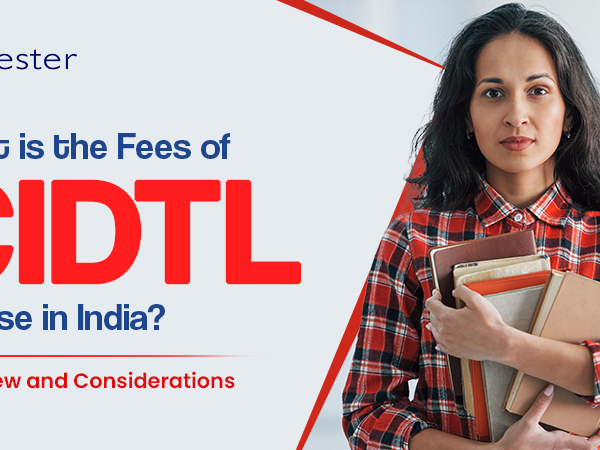A classroom that doesn’t fit all. Imagine a classroom with Elephant, fish, eagle, and tiger. Try to picture a “one size fits all classrooms” for them. Impossible right? Well, it was actually made possible. Yes, we all grew up in the same classrooms where every unique person having the same lessons and one stupid paper determining our capability. Just like asking a fish to climb a tree to grade its skillset.
Generations have changed, technology created wonders proving change is permanent. Then, why not education system? If you are someone who goes to the gym, you might have come across the term ‘personal trainer’. What if someone approaches you with a personalized teaching model? Amazing right?
As families, communities, parents, teachers, and students around the country have deep conversations around how to transform schools to better prepare each student for future success. Many schools are implementing personalized learning models to best meet the unique needs of each student and prepare all students for a lifetime of success (simultaneously). Curious to know what it is?
What is it?
Personalized learning is intended to facilitate the academic success of each student by first determining the learning needs, interests, and aspirations of individual students, and then providing learning experiences that are customized—to a greater or lesser extent—for each student. To accomplish this goal, schools, teachers, guidance counsellor, and other educational specialists may employ a wide variety of educational methods, from intentionally cultivating strong and trusting student-adult relationships to modifying assignments and instructional strategies in the classroom to entirely redesigning how students are grouped and taught in a school.
To get an idea of what personalized learning is, try to picture a classroom that doesn’t have a one size fits all approach to education. The teacher doesn’t lead all students through the same lessons. Instead, the teacher guides each student on an individualized journey. The what, when, where and how of learning is tailored to meet each student’s strengths, skills, needs, and interests.
How does it work?
No two schools using personalized learning will look exactly the same. But here are four widely used models schools follow. Each of these models sets high expectations for all students and aligns their learning to a set of rigorous standards.
1) Using learner profiles: This type keeps an up-to-date record that provides a deep understanding of each student’s individual strengths, needs, motivation, progress, and goals. These profiles are updated far more often than a standard report card.
2) Personalized learning paths: This type creates a student’s schedule based on weekly updates about his academic progress and interests. Each student’s schedule is unique. But it’s likely to include project-based learning with a small group of peers, independent work on certain skills or complex tasks and one-on-one tutoring with a teacher.
3) Competency-based progression: This type continually assesses students to monitor their progress toward specific goals. This system makes it clear to students what they need to master. Students are given options of how and when to demonstrate their mastery.
4) Flexible learning environments: This type adapts the environment students learn in, based on how they learn best. This includes things like the physical setup of the class, how the school day is structured and how teachers are allocated.
Students may learn some skills at different paces. But their learning plans still keep them on track to meet the respective standards. That kind of classroom isn’t a reality for most students. But that’s the end goal of personalized learning, which is already being used successfully in some schools and is expanding in several states.
It’s time for empowering educators to personalize learning. Now, thanks to new designs, tools, and approaches, teachers can provide every student with powerful, personalized learning experiences. Teachers find this empowering and motivating. In personalized learning models, educator’s roles are more important than ever as they design customized approaches, their professional expertise is valued and respected. In fact, many teachers explain that one of the biggest benefits of personalized learning is that they can “get back to the reason I became a teacher.” What if you can carry your personal teacher anywhere and everywhere you go? Yes, technology made it possible.
Personalized E-learning
The concept of ‘Personalization’ can easily be understood from taking a closer look at some of the existing digital technologies that all of us use. For instance, from the browser that you use to roam the Internet, to the email and messaging systems that you use to stay connected with friends and family, to the digital boxes you use to watch TV shows and movies online – they all offer personalization and customization options. However, when it comes to eLearning systems, ‘personalization’ takes on a whole new meaning.
Personalized eLearning is the act of customizing:
- The learning environment (e.g. how the content appears to the learner – font sizes, colours, backgrounds, themes, etc.)
- The learning content itself (e.g. audio, video, textual, graphical, etc.)
- The interaction between facilitator, student and the learning content (e.g. mouse, stylus, tap/swipe, keyboard; e.g. using “Gaming”, Quizzes, Online discussions, Demonstrate-do-check-reinforce, Adaptive learning approaches, Tutorials)
What does it mean?
Well, as it relates to eLearning, personalization involves not only providing the ability to customize the learning environment, similar to the ‘preferences’ and ‘settings’ options that most digital tools offer today; but also personalizing many other aspects of the entire learning experience.
Personalized eLearning, therefore, encompasses the ability to customize aspects such as:
- What content should be delivered as part of the learning experience?
- How the content should be delivered?
- What will be the sequence of its delivery?
- How will students be evaluated?
- What feedback mechanisms will be offered?
Tips to Personalize E-Learning
- Personalize the learner.
- Personalize the environment.
- Personalize the content.
- Personalize the roles with the use of photographs and pictures.
- Personalizing learning objectives.
- Personalizing learning sequences.
- Personalize the ‘conversation’.
- Personalize the navigation.
- Recognize individual competency.
- Personalize the media.
The tools of the trade are also changing so they don’t get swamped by the personalization wave. Better Learning Management Systems, authoring tools, and better analytics are helping teams learn better by understanding how the individuals within that team are responding to the content making the eLearning course more meaningful and powerful. David Hahn of LinkedIn had said, “The key ingredient to better content is separating the single from the stream”. That’s a great sentiment if you are in the eLearning game today!
One-on-one E-teaching
Many online courses like eMaester provide one-on-one teaching with the usage of technology. They even provide flexible timings to their students. So it has become more compatible to study with unique methodology with a personal trainer. Teachers will have the chance to customize each lesson to their student’s needs and the possibility to target activities to a student’s strengths and weaknesses is a huge plus. The student has a unique opportunity for intensive practice. Still, the teacher is the one responsible for maximizing their time with the student. What would a teacher prefer between normal teaching and personalized teaching? Let’s see what their views are.
Reasons Why Teachers Prefer It
- Teachers form stronger relationships with students because they spend more time getting to know each student and his/her strengths, goals and interests.
- Focusing on research on how a student learns best.
- They have more time each day where they can communicate and collaborate with one another, asking questions and figuring out what’s working and what’s not working. Teachers get to be more creative in how they design curriculum and instruction.
- Teachers can spend more time working individually and in small groups with students.
- Spending less time preparing students for high-stakes tests and more time acting as guides and mentors to students as they are learning.
- Helping students better understand themselves and their goals for the future.
- Teachers have more opportunities to develop their own skills as teachers and to work in collaboration with other teachers.
Well, this is what they think. Don’t you think we should know what benefits we get by the personalized learning? What are the drawbacks?
Pros & Cons
Pros
As I said, each student should be the master of his/her own education and it comes with personalization of content and personalization of feedback. To understand what’s wrong in your process of learning but also what is not clear on your previous knowledge a paper test with the same questions as your neighbour will not totally help. However, tests which are more based on finding your level and asking you some questions to let you improve, that can help.
Every student has his/her own pace while learning a new topic. Some people will find an exam really easy while others will cry and express their lack of knowledge or confidence. We are humans, we are different. People also have different backgrounds. It can be educational or emotional or physical, each of them impacts the learning and so as you can understand it will vary more or less between the student. The good point is that personalized teaching does not really care about it, it will take the time it needs to let you understand the concept. Isn’t it awesome? It is an eternally patient good teacher.
Cons
Now, it has cons. However, I consider these cons as a problem of the usage of the technique. The first one is the dehumanization of the classroom. You may imagine education on a computer like this:
The difference is how we see things. I imagine some students helping each other with their own words or trying to solve a problem together, I’m not seeing them as in a box, the nose on the screen. For communication with teachers, the computer doesn’t mean replacing all teachers. It just means to replace some. The good ones will be here to follow the progress of children and give them some advice to let them improve. They will be more considered as mentors (what a teacher should be) than a lecturer.
We have another problem, the effects of screens on the eyes and especially for young children. But once again it is all about your point of view. Who said the learning on the computer should be 8 hours? I see it more as 2–4 hours per day and then the students can do other activities which necessitate more co-operation like doing an experiment in chemistry, we need to see theoretical knowledge as the root of learning, it is the beginning but it is not everything. Students need to apply the theory to understand what does that mean, if they don’t they will just have an abstract thing in the mind.
Key takeaways:
- Personalized learning is an educational approach that aims to customize learning for each student’s strengths, needs, skills, and interests.
- Personalized learning may reduce the stigma of special education.
- There are several models of personalized learning that we can use, E-learning and one-to-one learning are a few of them.
- Teachers often need more training to fully include struggling students in personalized learning.
- Each student gets a learning plan that’s based on what he knows and how he learns the best.
- Both uses and drawbacks exist in personalized learning, so the choice is ours.
“Traditional teaching is something that is given to you. Personalized learning is something you seek.”
Catrin Lingad
.




